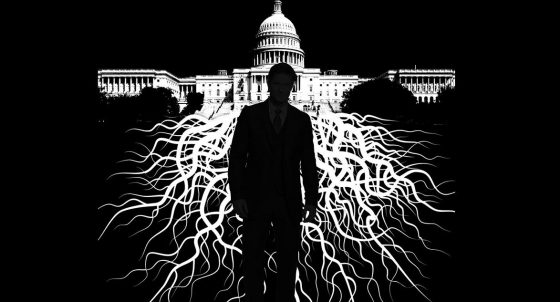Public Event Safety – What to Do if Shots Ring Out

Podcast: Play in new window | Download
Going to hear a public speaker or watch a live event shouldn’t have to be nerve-wracking. But after a string of high-profile assassination attempts—including one that succeeded—more people are wondering: how do I keep myself and my family safer at rallies, concerts, or outdoor events?
And you’re right to wonder. There’s no two ways about it. And that’s what this article is going to focus on: How to stay safe at a public event, should shooting start. What do you do? What’s the best course of action?
Let’s walk through what smart event preparation looks like, and what to do if the worst-case scenario actually plays out with you or your loved ones in attendance.
TL;DR: Stay off the X, know your exits, and have a plan. If gunfire erupts, drop, move, cover, and communicate. Your mindset and prep could save your life.
Quick Look at What You’ll Learn
You’re Prepping for Terrorism
Our world is becoming more violent. At a minimum, people are willing to go to greater and more violent extremes to support their political ideology.
With that, let’s make no bones about it. What we are witnessing play out with two assassination attempts on President Trump, plus yesterday’s assassination of Charlie Kirk, is terrorism. The definition of terrorism is “the unlawful use of violence and intimidation, especially against civilians, in the pursuit of political aims.”
So, if you’re wondering whether prepping before attending a large gathering of people is worthwhile, the answer is yes. You aren’t prepping for a random shooter. You are preparing to survive an encounter with one or more armed, capable, and motivated terrorists. Having a plan and being a step ahead of the crowd can mean the difference between surviving the incident and becoming a statistic.
Before You Even Go
Going to see a political figure? A celebrity? A controversial speaker? Perhaps a concert or a ball game at the park. All are relatively “soft targets,” with a “soft target” being a person, thing, or location that is easily accessible to the general public and relatively unprotected, making it vulnerable to crime and attack.
So, think about that. Any place that is easily accessible to the general public and which is relatively unprotected is a soft target. I’m willing to bet that describes most places you go. Does that mean most places you go are dangerous? No, it means that they are vulnerable. Therefore, you should have at least a basic plan ready on the off chance something happens.
Step one is understanding the event risk. You don’t have to cancel your plans, but you should go in with your eyes open. We have to live our lives. It’s not something to stress about. Rather, it’s something to be aware of.
Before the Event Actions
- Choose your event wisely. Not all events carry the same risk. Political rallies, protests, or any event involving controversial figures can become flashpoints.
- Know the layout. Check the venue online. Identify exits, parking lots, public access points, and potential choke points in and out of the area. The more you know going in, the faster you can move if needed.
- Dress for mobility. That means comfortable clothes, practical shoes, and no gear that slows you down. If you have to run or get low, can you do it easily?
- Go with a partner or group. Pairs can communicate, watch each other’s backs, and coordinate if things go sideways.
- Let someone know you’re going. A trusted friend or family member should know where you’ll be and when you expect to be back.
Positioning Is Everything
The number one thing that determines your survivability if gunfire breaks out? Where you’re standing.
Stay off the “X.” The X is the danger zone. It’s where the shooter is focused. That often means front-and-center, along the line of sight to the speaker, or any high-visibility area.
Stand to the sides. Preferably near an exit, and with something solid nearby that could become cover.
Avoid fences and barriers. They can trap you when you need to move. Always make sure you have an exit. When a shooting starts and a stampede of people happens, getting caught against a fence, or other barrier, and the crowd can be deadly.
Stay mobile. Avoid sitting or lounging on the ground in packed crowds. Packed crowds are a high-value, easy-to-hit target. Avoid them. The goal is to remain alert and able to act.
Situational Awareness in a Crowd
Events can be overwhelming. Music, shouting, signs, costumes—it’s easy to go on autopilot. Heck, that’s part of the fun of being at a big event—to really get into it.
But this is where training your attention pays off.
- Identify hardcover. Look for concrete structures, pillars, walls, or steel. Not everything that hides you protects you. Think of the Las Vegas shooting, where many of the people who survived did so by finding cover behind concrete barriers.
- Watch for security gaps. If there’s visible law enforcement or private security, note their location. Look for blind spots they might miss. Those are possible danger areas.
- Watch the watchers. Is someone tracking the stage more intensely than others? Filming more than enjoying? Loitering without engaging?
- Keep your ears open. Gunshots don’t always sound like the movies. Think: sharp cracks, not booms.
- Trust your gut. If someone gives you a weird feeling, don’t ignore it. Shift your position or move.
If Shots Ring Out
Seconds matter. And indecision can get you killed.
Here’s a simple framework: Drop. Move. Cover. Communicate.
- Drop. If you hear gunshots, get down. Don’t analyze it, do it. Think this through ahead of time. If you’re in the mall and hear gunshots, get down. You’re at the park and hear gunshots—get down. The goal is to make yourself a harder target.
- Move. If, due to the situation, you can’t drop where you are, don’t freeze. Move away from the sound of gunfire—lateral or diagonal is often better than straight back. Look for hard cover. If you see someone get shot, move away from them.
- Cover, not concealment. A bush might hide you. It won’t stop a bullet. Get behind something solid: concrete, a pillar, a concrete barrier, a truck engine block.
- Communicate. Tell people around you what you see: “Shooter! Get down! This way!” Short, clear, loud.
- Stay together. If you’re with others, stay together if you can. However, don’t get bogged down trying to gather a large group during a crisis. Get yourself to safety and direct those around you to safety as well.
- Be Ready to Move Again. Don’t get complacent once you feel you’re out of harm’s way. While the attacks we’ve seen have been lone shooters, it won’t stay that way. At some point, there will be multiple shooters who have a multiphased plan to inflict as much carnage as possible. Be ready to rescue yourself.
What Not to Do
People make fatal mistakes in the moment. Let’s head those off:
- Don’t run blindly. You’ll likely follow the crowd into a bottleneck or danger. This is why you have a plan.
- Don’t stop to film. Your life matters more than your follower count. The goal here is to survive. There will be plenty of video of the tragedy.
- Don’t go toward the sound. Unless you’re trained, armed, and the only option is engagement, distance is a matter of survival. Get away.
- Don’t draw a weapon unless you must. If you’re carrying a firearm and gunfire breaks out, do not pull it out unless you have to. Law enforcement will be descending on the area and will likely be keyed up. If they incorrectly perceive you as a threat, you’ll probably get shot, along with those around you. You don’t want to be mistaken for the shooter.
The Few Minutes After the Shooting
Once you’re behind cover, your goal is to assess, adapt, and stay safe.
- Scan for other threats. More than one shooter? A vehicle being used as a weapon? What’s going on?
- Silence your phone. Vibrate only.
- Call 911 if safe to do so. Provide clear details: location, description, and number of shooters if known. How many victims? SALUTE report.
- Check yourself and others for injuries. If you’re trained and have a trauma kit, now’s the time to use it.
If the situation calms or the attacker is neutralized, follow law enforcement commands exactly. Hands visible. Move slowly. Say nothing unless asked. If law enforcement isn’t there, you have a choice to make: render aid, or get away. If there’s no aid to render or it’s already being handled by others, move away from the event. Avoid crowds and congregating in groups in case of follow-on attacks.
Smart Event Prep Ahead of Time
If you’re someone who attends a lot of events, these are worth doing now—not in the moment:
- Create a basic meet-up plan. Select a location nearby but away from the event where your group will gather if you become separated.
- Use a tracking app. Life360, share your location or similar, so you can keep track of each other.
- Carry a micro trauma kit. Tourniquet, gauze, gloves—and get trained on how to use them. Did you look to see if there are bleeding control kits stationed near the AEDs?
- Have a plan for escape. Have your plan ready to go. Clearly and concisely communicate to the others what you and your group are doing, and then make it happen. You take charge of this. Maintain a good head count and accountability of everyone, and exit the area.
The Bottom Line on Staying Safe at Events
It all comes down to mindset. You can’t anticipate every threat. But you can reduce your chances of being caught flat-footed.
Visualize. Take the time to have a plan. Think through your options. None of this makes you paranoid. It makes you prepared.
Your goal isn’t to stop the attack. It’s to survive. And maybe help others survive, too.
So if you’re headed to a rally, a festival, or a game, go enjoy it. Just give yourself a mental edge ahead of time. That edge might make all the difference.
Additional Resources
Read the full article here









